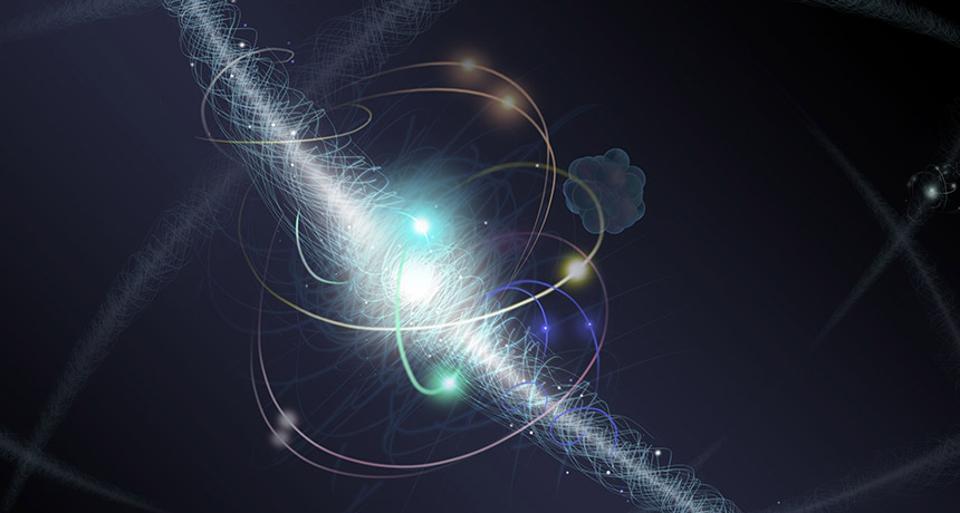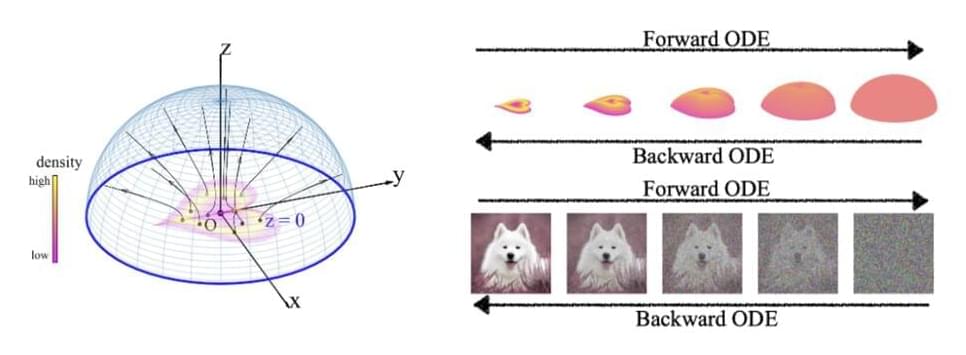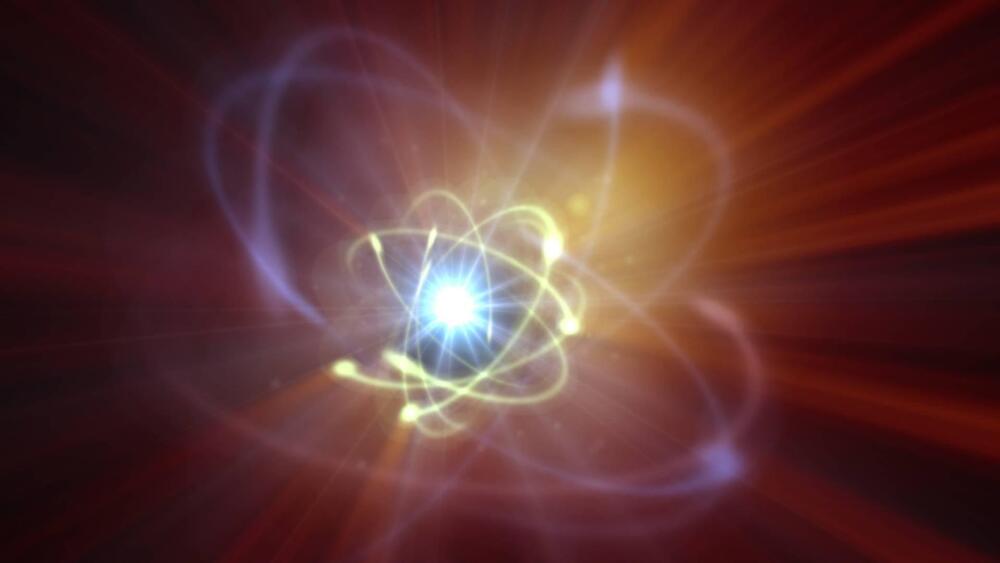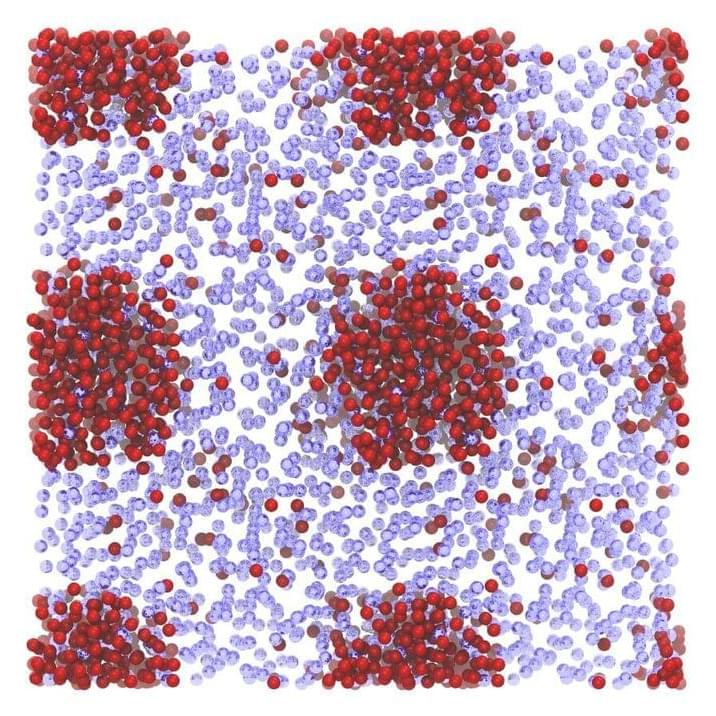From the tiniest subatomic scales to the grandest cosmic ones, solving any of these puzzles could unlock our understanding of the Universe.



Deep generative models are a popular data generation strategy used to generate high-quality samples in pictures, text, and audio and improve semi-supervised learning, domain generalization, and imitation learning. Current deep generative models, however, have shortcomings such as unstable training objectives (GANs) and low sample quality (VAEs, normalizing flows). Although recent developments in diffusion and scored-based models attain equivalent sample quality to GANs without adversarial training, the stochastic sampling procedure in these models is sluggish. New strategies for securing the training of CNN-based or ViT-based GAN models are presented.
They suggest backward ODEsamplers (normalizing flow) accelerate the sampling process. However, these approaches have yet to outperform their SDE equivalents. We introduce a novel “Poisson flow” generative model (PFGM) that takes advantage of a surprising physics fact that extends to N dimensions. They interpret N-dimensional data items x (say, pictures) as positive electric charges in the z = 0 plane of an N+1-dimensional environment filled with a viscous liquid like honey. As shown in the figure below, motion in a viscous fluid converts any planar charge distribution into a uniform angular distribution.
A positive charge with z 0 will be repelled by the other charges and will proceed in the opposite direction, ultimately reaching an imaginary globe of radius r. They demonstrate that, in the r limit, if the initial charge distribution is released slightly above z = 0, this rule of motion will provide a uniform distribution for their hemisphere crossings. They reverse the forward process by generating a uniform distribution of negative charges on the hemisphere, then tracking their path back to the z = 0 planes, where they will be dispersed as the data distribution.

A team of researchers from HSE MIEM joined colleagues from the Institute of Non-Classical Chemistry in Leipzig to develop a theoretical model of a polymeric ionic liquid on a charged conductive electrode. They used approaches from polymer physics and theoretical electrochemistry to demonstrate the difference in the behavior of electrical differential capacitance of polymeric and ordinary ionic liquids for the first time. The results of the study were published in Physical Chemistry Chemical Physics.
Polymerized ionic liquids (PIL) are a relatively new class of materials with increasing applications in various fields, from the development of new electrolytes to the creation of solar cells. Unlike ordinary room temperature ionic liquids (liquid organic salts in which cations and anions move freely), in PILs, cations are usually linked in long polymeric chains, while anions move freely. In recent years, PILs have been used (along with ordinary ionic liquids) as a filling in the production of supercapacitors.
Supercapacitors are devices that store energy in an electric double layer on the surface of an electrode (as in electrodes of platinum, gold and carbon, for example). Compared, for example, to an accumulator, supercapacitors accumulate more energy and do so faster. The amount of energy a supercapacitor is able to accumulate is known as its ‘capacitance’.

The researchers are one step closer to making the technology viable.
Physicists at the U.S. Department of Energy’s (DOE) Princeton Plasma Physics Laboratory (PPPL) have taken a critical step forward toward achieving nuclear fusion.
The scientists traced back the collapse to the 3D disordering of strong magnetic fields.
Aleksandarnakovski/iStock.
Magnetic fields are used in fusion facilities as substitutes for the powerful gravity that holds fusion reactions in place in celestial bodies. However, in laboratory experiments these fields are disordered by plasma instability resulting in a superhot plasma rapidly escaping confinement. The ensuing heat can damage fusion facility walls.

The 100 MW Dalian Flow Battery Energy Storage Peak-shaving Power Station, with the largest power and capacity in the world so far, was connected to the grid in Dalian, China, on September 29, and it will be put into operation in mid-October.
This energy storage project is supported technically by Prof. Li Xianfeng’s group from the Dalian Institute of Chemical Physics (DICP) of the Chinese Academy of Sciences. And the system was built and integrated by Rongke Power Co. Ltd.
The Dalian Flow Battery Energy Storage Peak-shaving Power Station was approved by the Chinese National Energy Administration in April 2016. As the first national, large-scale chemical energy storage demonstration project approved, it will eventually produce 200 megawatts (MW)/800 megawatt-hours (MWh) of electricity.
If there is one thing science fiction movies and comics have taught us, it’s that humans have no.
limitations, and we will one day be able to open a portal that transverses into another dimension. What if I tell you that day is closer to us than ever? This is the latest discovery made.
by scientists and is by far the biggest of the century.
Will we finally get to find out if we are the only beings in the cosmos? What technology have.
scientists designed capable of making interstellar teleportation possible? How and where will.
the portals take us?
Join us as we explore how scientists have finally found a way to open a portal to another.
dimension.
Disclaimer Fair Use:
1. The videos have no negative impact on the original works.
2. The videos we make are used for educational purposes.
3. The videos are transformative in nature.
4. We use only the audio component and tiny pieces of video footage, only if it’s necessary.
DISCLAIMER:
Our channel is purely made for entertainment purposes, based on facts, rumors, and fiction.
Copyright Disclaimer under section 107 of the Copyright Act 1976, allowance is made for “fair use” for purposes such as criticism, comment, news reporting, teaching, scholarship, education, and research. Fair use is a use permitted by copyright statutes that might otherwise be infringing.

Infinity is back. Or rather, it never (ever, ever…) went away. While mathematicians have a good sense of the infinite as a concept, cosmologists and physicists are finding it much more difficult to make sense of the infinite in nature, writes Peter Cameron.
Each of us has to face a moment, often fairly early in our life, when we realize that a loved one, formerly a fixture in our life, was not infinite, but has left us, and that someday we too will have to leave this place.
This experience, probably as much as the experience of looking at the stars and wondering how far they go on, shapes our views of infinity. And we urgently want answers to our questions. This has been so since the time, two and a half millennia ago, when Malunkyaputta put his doubts to the Buddha and demanded answers: among them he wanted to know if the world is finite or infinite, and if it is eternal or not.

Nanobubbles are extremely small (i.e., nanoscopic) gaseous cavities that some physicists observed in aqueous solutions, typically after specific substances were dissolved in them. While some studies reported the observation of these incredibly tiny bubbles, some scientists have argued that they are merely solid or oily residues formed during experiments.
Researchers at Centro de Investigación y de Estudios Avanzados Unidad Monterrey and Centro de Investigación en Matemáticas Unidad Monterrey in Mexico have recently carried out an experiment aimed at further investigating the nature of these elusive and mysterious objects, specifically when xenon and krypton were dissolved in water. Their study, featured in Physical Review Letters, identified the formation of what the team refers to as “nanoblobs,” yet found no evidence of nanobubbles.
“Our aim was to create xenon and krypton nanobubbles using a clean method,” Carlos Ruiz Suarez, one of the researchers who carried out the study, told Phys.org. “I must say that many scientists claim that nanobubbles, despite their use in many applications, do not exist. Rather, it is thought that they are oil/solid contaminants formed during the experiments.”
Skoltech scientists modeled the behavior of nanobubbles appearing in van der Waals heterostructures and the behavior of substances trapped inside the bubbles. In the future, the new model will help obtain equations of state for substances in nano-volumes, opening up new opportunities for the extraction of hydrocarbons from rock with large amounts of micro-and nanopores. The results of the study were published in the Journal of Chemical Physics.
The van der Waals nanostructures hold much promise for the study of tiniest samples with volumes from 1 cubic micron down to several cubic nanometers. These atomically thin layers of two-dimensional materials, such as graphene, hexagonal boron nitride (hBN) and dichalcogenides of transition metals, are held together by weak van der Waals interaction only. Inserting a sample between the layers separates the upper and bottom layers, making the upper layer lift to form a nanobubble. The resulting structure will then become available for transmission electron and atomic force microscopy, providing an insight into the structure of the substance inside the bubble.
The properties exhibited by substances inside the van der Waals nanobubbles are quite unusual. For example, water trapped inside a nanobubble displays a tenfold decrease in its dielectric constant and etches the diamond surface, something it would never do under normal conditions. Argon which typically exists in liquid form when in large quantities can become solid at the same pressure if trapped inside very small nanobubbles with a radius of less than 50 nanometers.
For Physics & Chemistry experiments for kids delivered to your door head to https://melscience.com/sBIs/ and use promo code DRBECKY50 for 50% off the first month of any subscription (valid until 22nd October 2022).
To find out whether you can see the partial solar eclipse on 25th October 2022 put in your location here: https://www.timeanddate.com/eclipse/map/2022-october-25
To watch the next launch attempt for Artemis live at 6pm EST on Tuesday 27th September head to @NASA ‘s YouTube channel here: https://www.youtube.com/watch?v=CMLD0Lp0JBg.
To watch the DART mission impact live on Monday 26th September 2022 head to @NASA ‘s YouTube channel here: https://www.youtube.com/watch?v=4RA8Tfa6Sck.
My previous video on the DART mission: https://youtu.be/ZBhTtaTGhao.
My previous video on whether aliens exist (inc. Drake equation): https://www.youtube.com/watch?v=fihVzPl7Dys.
My previous Night Sky News debunking these JWST Big Bang Theory claims: https://www.youtube.com/watch?v=Fqfap3v0xxw.
My previous video chatting with Dr. Libby Jones about being in control of JWST: https://www.youtube.com/watch?v=UPO8pw8r7ak.
My previous video on the discovery of the star Earendel: https://www.youtube.com/watch?v=VChgsXbIgdw.
Welch et al. (2022; Earendel imaged with JWST — not peer reviewed) — https://arxiv.org/pdf/2208.09007.pdf.
Welch et al. (2022; Earendel discovered with HST — behind pay wall) — https://www.nature.com/articles/s41586-022-04449-y.
Carter et al. (2022; JWST direct image exoplanet HIP 65426b — not peer reviewed) — https://arxiv.org/pdf/2208.14990.pdf.
El Baldry et al. (2022; a black hole orbiting a Sun-like star — not peer reviewed) — https://arxiv.org/pdf/2209.06833.pdf.
PDRs4ALL project (that imaged the Orion nebula with JWST) — https://pdrs4all.org/
00:00 — Introduction.
00:40 — Fireball meteor across Ireland & Scotland.
01:35 — Draconids & Orionids Meteor Shower.
03:05 — Mars, Jupiter & Saturn visible right now.
03:39 — Jupiter at Opposition 26th September.
04:27 — Partial Solar Eclipse 25th October 2022
06:13 — Artemis launch rescheduled.
07:08 — DART mission asteroid impact imminent.
07:48 — RIP Frank Drake 1930–2022
08:25 — JWST misinformation AGAIN
09:39 — JWST confirms Earendel is a star (or binary star system)
13:31 — JWST’s first direct image of an exoplanet HIP 65426b explained.
17:07 — JWST observes Orion nebula.
19:39 — New candidate for closest black hole (its orbiting a Sun-like star too!)
23:59 — Outro.
24:26 — MEL science.
26:17 — Bloopers.
📚 My new book, “A Brief History of Black Holes”, out NOW in hardback, e-book and audiobook (which I narrated myself!) Note, USA & Canada hardback out 1st November 2022: http://hyperurl.co/DrBecky.